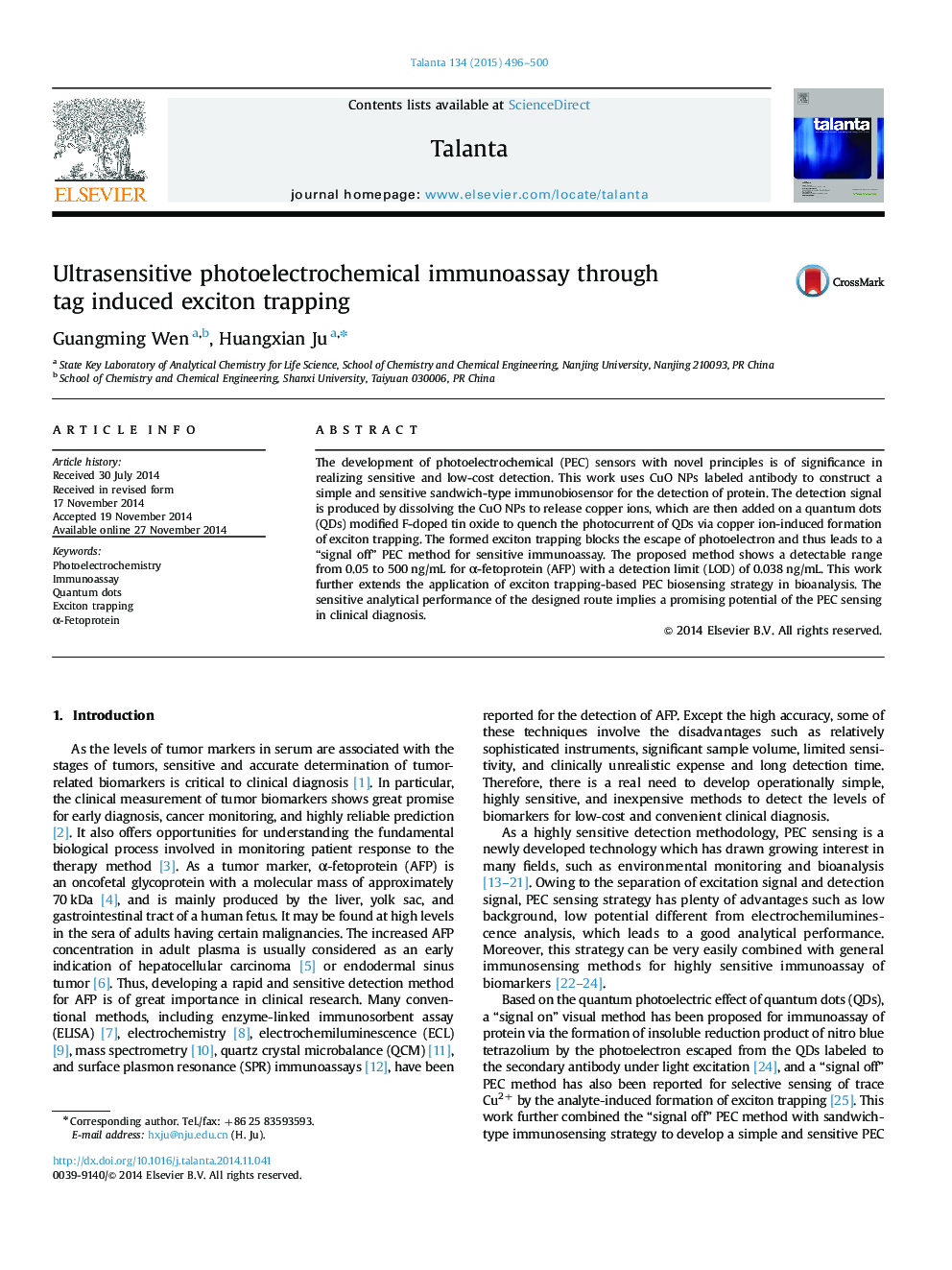| Article ID | Journal | Published Year | Pages | File Type |
|---|---|---|---|---|
| 1244110 | Talanta | 2015 | 5 Pages |
•A simple and sensitive photoelectrochemical immunoassay method is designed for protein detection.•The detection relies on copper ion-induced formation of exciton trapping.•CuO NPs are used to label the secondary antibody.•The immunoassay method shows wide detectable range, low detection limit and high specificity.
The development of photoelectrochemical (PEC) sensors with novel principles is of significance in realizing sensitive and low-cost detection. This work uses CuO NPs labeled antibody to construct a simple and sensitive sandwich-type immunobiosensor for the detection of protein. The detection signal is produced by dissolving the CuO NPs to release copper ions, which are then added on a quantum dots (QDs) modified F-doped tin oxide to quench the photocurrent of QDs via copper ion-induced formation of exciton trapping. The formed exciton trapping blocks the escape of photoelectron and thus leads to a “signal off” PEC method for sensitive immunoassay. The proposed method shows a detectable range from 0.05 to 500 ng/mL for α-fetoprotein (AFP) with a detection limit (LOD) of 0.038 ng/mL. This work further extends the application of exciton trapping-based PEC biosensing strategy in bioanalysis. The sensitive analytical performance of the designed route implies a promising potential of the PEC sensing in clinical diagnosis.
Graphical abstractA simple and sensitive PEC immunoassay method with CuO NPs labeled antibody was proposed for detection of protein.Figure optionsDownload full-size imageDownload as PowerPoint slide
